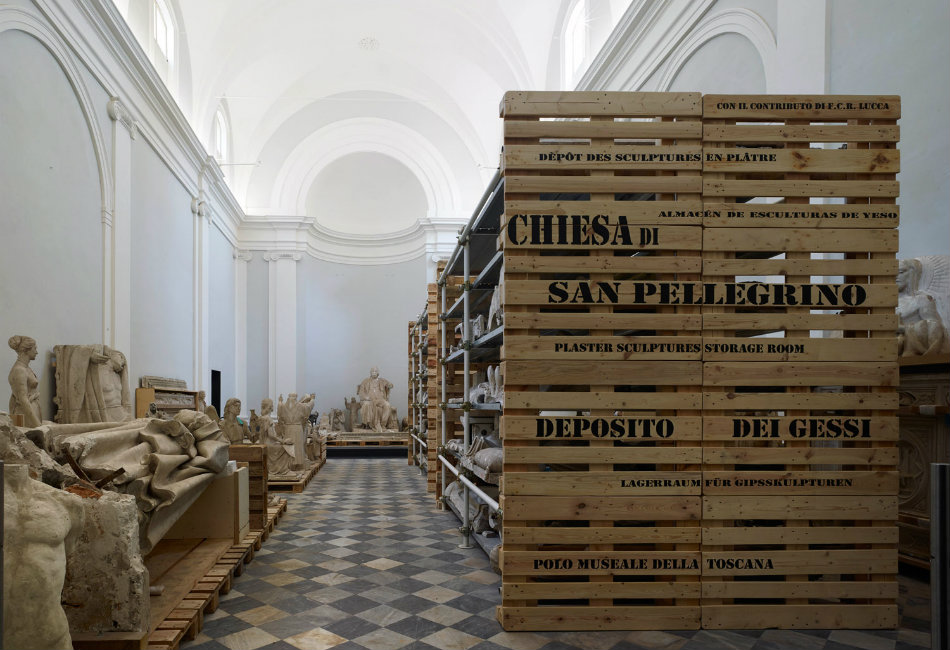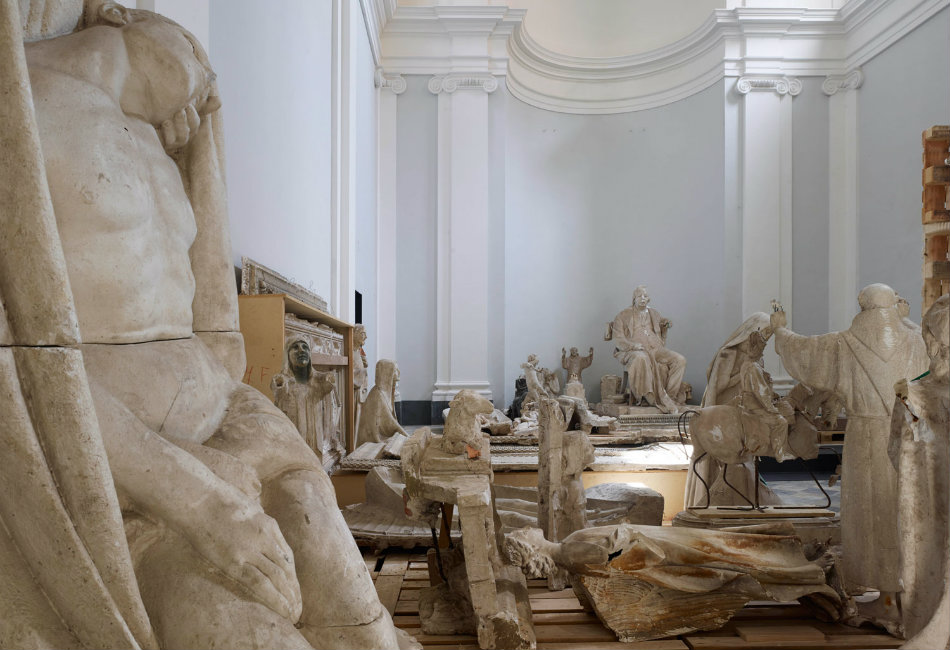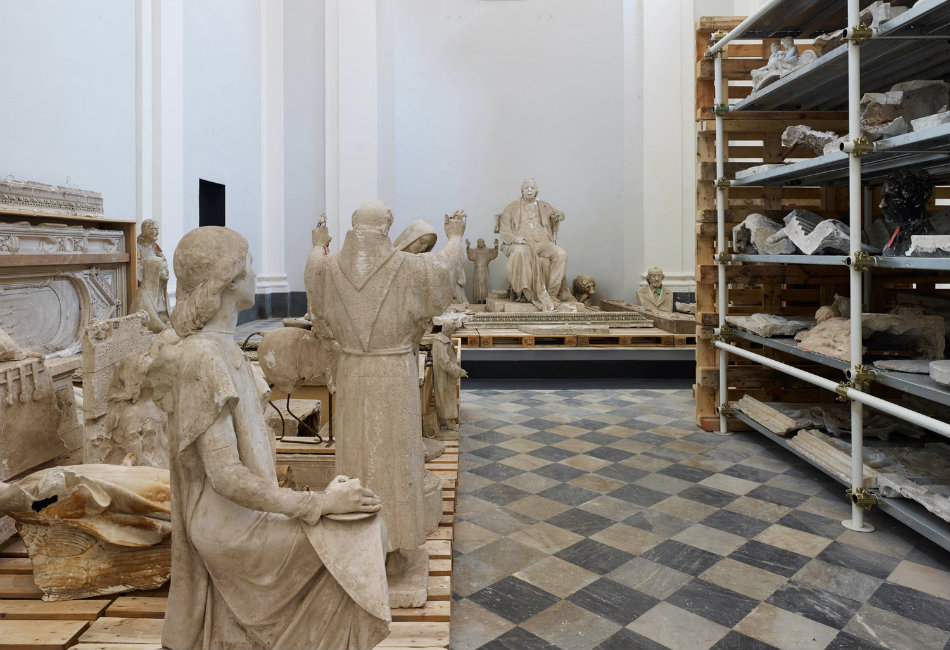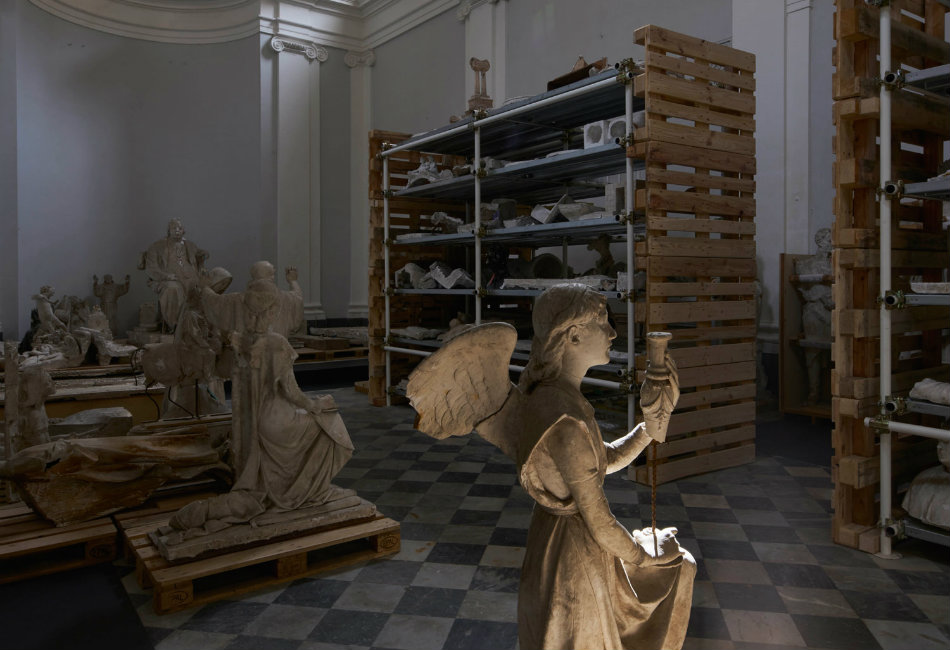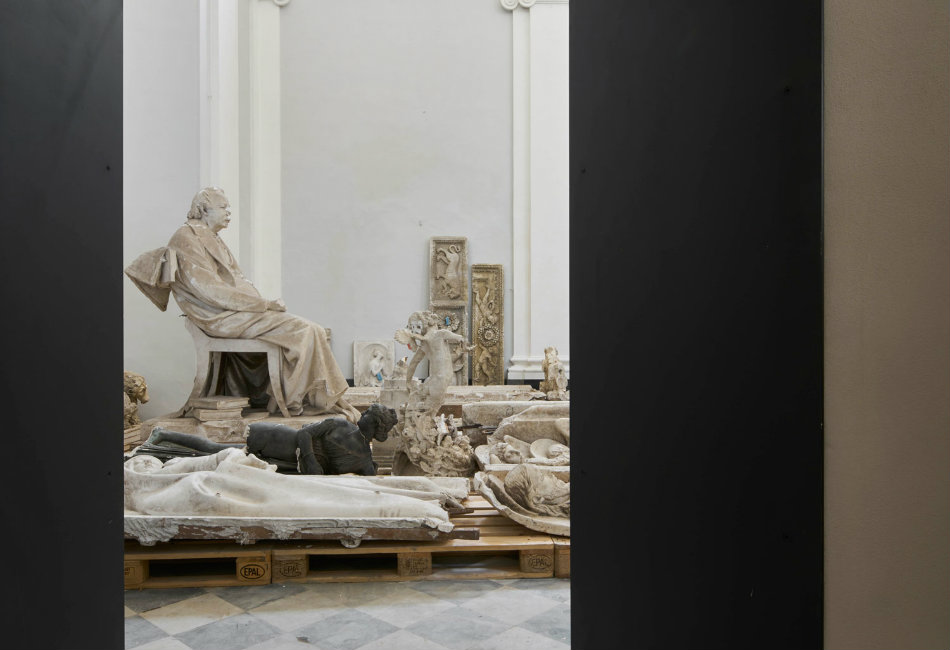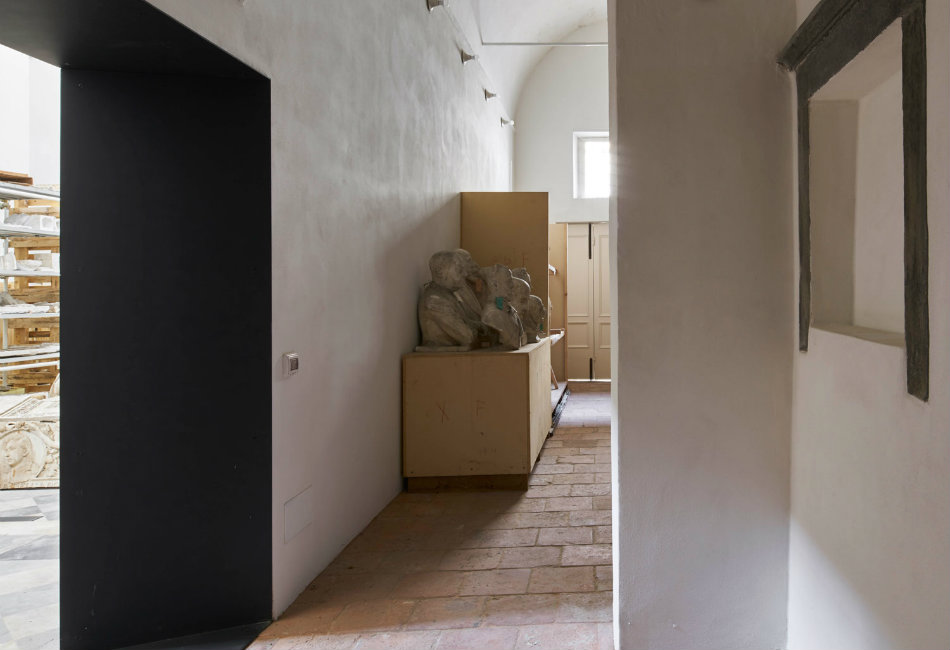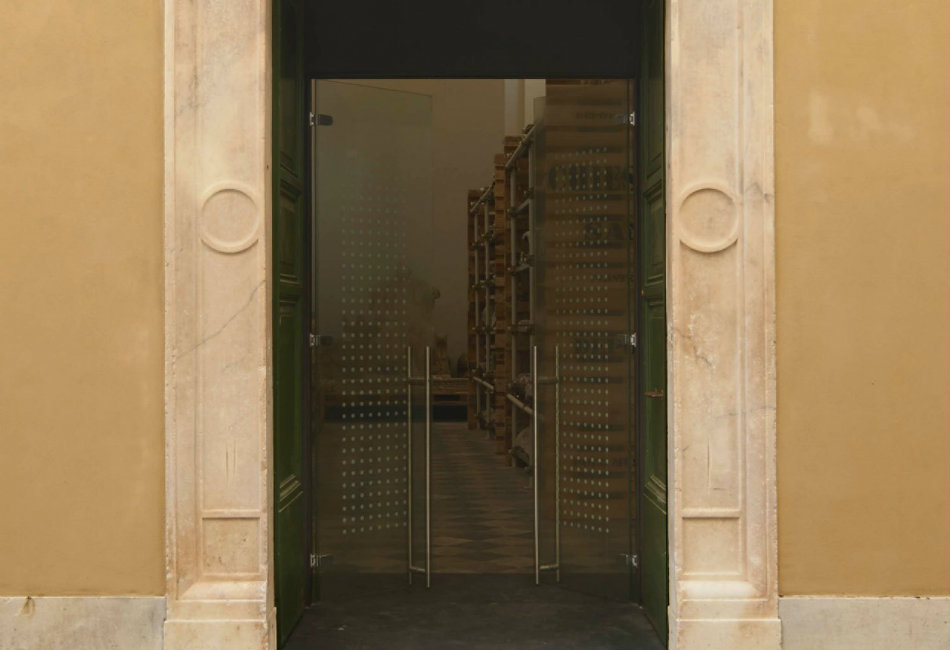The Church of San Pellegrino in the historic centre of Lucca, Italy takes the name from its location on Via San Pellegrino, now known as Via Galli Tassi. It is believed that the church was built at the ancient San Giorgio doorway – the access door to ancient Roman forts, hidden in the walls and used as an emergency passage during attacks and sieges. It’s original size would have only allowed the passage of one person at a time. Expanded in the middle of the 17th century with the great vaulted hall, it became the place for pilgrimage and prayer for wealthy local families. In 1808, the Church of San Pellegrino was closed for worship. In the 20th century, it became an organ workshop where city church organs were manufactured and repaired, later becoming a warehouse.
The Church was in an advanced state of neglect when MICROSCAPE architecture urban design AA were commission in 2015 to restore it’s exterior and interior, with the intent of transferring the plaster cast collections from the Polo Museale Toscano. The plaster collection consists of 230 pieces dating from mid-19th century to mid-20th century. The project also involved the update of adjacent rooms connected to the church when the ancient door was reopened. San Pellegrino restoration is a low cost project, with utmost respect for the historical artefacts playing a central focus. MICROSCAPE restored the space to its former splendour, with special architectural lighting discretely integrated into the cornices, so any new technology was strictly hidden from view. The natural and artificial light truly define the interior.
The only new architectural elements added are the steel slabs placed to connect the door to the adjacent rooms, the missing steps in the presbytery, the areas where the side altars of St. Rocco were originally placed (no longer present in the church), and the front entrance area. The white marble and bardiglio floor was cleaned and coated in order to keep the authentic look of the multiple layers of wear from the past centuries. The setting up of the plaster sculptures – and given the large amount of pieces – is delivered by means of two systems: shelves made of metal tubes and timber palette tatami boards. These elements define multifunctional spaces by using the most important sculptural elements and placing them according to their shape and size. The sides of the shelves carry graphics in multiple languages – “a visual metaphor for the universality of art.”
